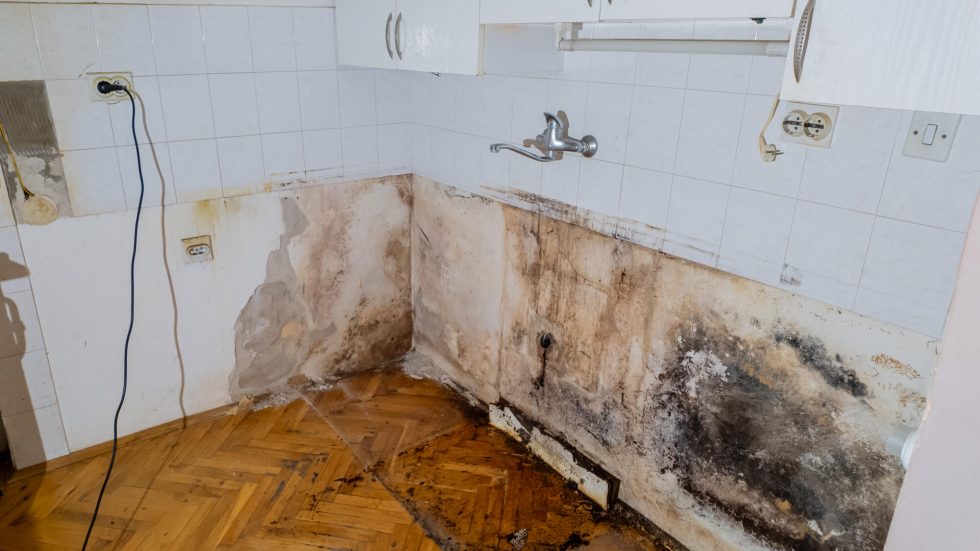Effective mold prevention strategies help maintain a fresh, clean home environment in which every room feels safe and healthy. Strategies such as conducting regular inspections, controlling indoor humidity, and improving ventilation help safeguard your home while ensuring lasting comfort for residents.
The growing demand for fungal growth prevention services among U.S. homeowners reflects rising awareness of mold-related health risks. This trend is supported by Grand View Research’s projection that the mold remediation market will expand at a 3.0% CAGR between 2024 and 2030.
The right insights can help maintain a healthier home, whether preventing mold or addressing past issues. Read on to discover practical ways to stop mold before it starts.
What Are the First Signs of Mold?
Early signs of mold in homes include:
- Unexplained musty odors
- Black, green, brown, or white spots on the ceiling, furniture, tiles, and walls
- Yellowish or brown water stains on the walls or ceilings
- Increased allergy symptoms
- Excess humidity
Being alert to these signs enables early detection and prevents prolonged exposure. This protects children, the elderly, and those with weakened immune systems from potential chronic health issues.
Mold feeds on organic materials like:
- Wood
- Drywall
- Insulation
Early detection and timely action can prevent damage to these structures. Staying vigilant for early signs and taking preventive measures also protects your home’s value and curb appeal.
What Is the Best Way to Prevent Mold?
Preventing mold is essential for protecting your family’s health by reducing risks such as:
- Respiratory infections
- Chronic sinus infections
- Weakened immune response
- Allergic reactions
- Neurological issues like difficulty concentrating
Mold prevention also saves money on repairs and maintains good indoor home air quality. An experienced and trustworthy mold remediation specialist, like Elite Mold Services, Inc. in Orlando, Florida, can recommend specific prevention strategies based on your home’s unique needs. Our team teaches homeowners how to recognize early signs of mold and adopt long-term habits that discourage mold growth.
1. Fixing Leaks Promptly
Water leaks add moisture to building materials. This creates the damp and dark conditions that mold spores require to thrive. Fixing leaks immediately prevents mold by reducing moisture buildup.
Water leaks often seep into hidden cavities, such as behind walls, under floors, or in ceilings. Prompt leak repairs help stop water from spreading into these areas. Make sure to fix these leaks immediately:
- Appliance leaks, such as leaks from washing machines
- Roof leaks
- HVAC leaks (leaking condensate lines)
- Window and door seal leaks
- Plumbing leaks
2. Utilizing Mold-Resistant Materials
Mold-resistant materials repel or limit water absorption, preventing the moisture buildup that mold needs to grow. Most of these materials have low porosity, which prevents them from trapping moisture.
Using them helps maintain a dry environment inside your home, making it more difficult for mold spores to take hold. Examples of these materials include:
- Paperless drywall
- Non-porous vinyl
- Glass tiles
- Porcelain tiles
- Closed-cell spray foam
3. Improving Ventilation
Adequate ventilation in areas such as the kitchen and bathroom enhances air circulation in your home, thereby reducing moisture buildup. Proper air circulation maintains a more even temperature and allows moisture to escape. This prevents condensation on ceilings, walls, and windows, reducing the risk of mold growth.
4. Maintaining Optimum Indoor Humidity
Controlling indoor humidity prevents excess moisture and condensation on the surfaces. It prevents dampness and keeps building materials dry and safe.
Maintaining optimum humidity also contributes to better airflow. Some ideal humidity control methods that can keep your home free from mold include:
- Use of air conditioning systems
- Use of dehumidifiers and humidifiers
- Improving ventilation
- Avoiding water-releasing indoor plants
5. Drying Wet Areas
Drying wet areas in your home prevents the germination of mold spores, which are always present in the air. Keeping the ceiling, walls, and other surfaces dry also prevents mold colonies from forming and spreading. Dry wallpaper, drywall, and wood are less likely to support mold growth.
6. Regularly Inspecting Mold-Prone Areas
Expert inspections help spot leaks, condensation, or damp spots before they escalate into mold problems. A mold remediation specialist can also test for mold in your indoor air during the inspection process. They utilize tools like moisture meters and infrared cameras to detect hidden mold in walls and ceilings.
Frequently Asked Questions
What are the best tips for homeowners to check for mold?
As a homeowner, don’t wait for visible mold growth. Ensure to regularly check concealed areas, such as:
- Behind appliances
- Under sinks
- Inside HVAC systems
- Basements
- Crawlspaces
A flashlight and a mirror can help you look into tight spaces where mold often thrives unnoticed. Also, check your home’s ventilation systems for dampness or moisture buildup.
How quickly must I dry spills or leaks to stop mold from forming?
Dry spills and repair leaks within 24 to 48 hours to reduce the risk of mold growth. When water remains beyond this period, airborne mold spores begin to grow and spread rapidly. Quickly drying spills and repairing leaks prevents water seepage that can cause warping or decay.
What humidity level should I maintain to prevent mold indoors?
Maintaining indoor humidity at 30%-50% effectively prevents mold growth. When relative humidity rises above 60%, mold can spread, but keeping it below 50% denies mold the moisture it needs.
How do ventilation and dehumidifiers compare for mold control?
Ventilation replaces moist indoor air with drier outdoor air when outdoor humidity is lower. It helps maintain balanced humidity levels.
Dehumidifiers effectively extract moisture from indoor air. This effectively lowers the relative humidity regardless of outdoor conditions.
Ventilation reduces stagnant air and condensation, but it’s often insufficient in high-moisture areas like bathrooms. Dehumidifiers can maintain relative humidity below 60%, the ideal range for preventing mold growth.
Mold Prevention: Protecting Your Home’s Indoor Comfort and Safety
Mold prevention is more about strategic moisture control and vigilance. By controlling humidity, fixing leaks promptly, and using mold-resistant materials, you can maintain a healthier home and protect your family’s well-being.
You should also not underestimate the value of professional expertise. At Elite Mold Services, Inc., we have been dedicated to serving the Central Florida community since 2006. We’ve been offering straightforward mold guidance and reassurance to residents of Orlando and nearby counties.
Our qualifications include ACAC Certifications, IAC2 Certifications, NORMI Certifications, and a State-licensed remediator. Call us today to schedule an inspection.

